If you own a swimming pool in Perth, you might wonder whether it’s really worth learning how to winterise a pool.
Many pool owners assume winter care isn’t necessary because Western Australia doesn’t experience freezing conditions like Europe or North America. Unfortunately, this misconception can leave your pool vulnerable.
Without proper winter preparation, pools often develop algae, scale build-up, cloudy water, and even expensive equipment failures. Ignoring winterisation can mean higher electricity bills, wasted chemicals, and costly repairs when summer returns.
The good news is that by following a simple step-by-step winterising process tailored for Perth’s climate, you can keep your pool water balanced, reduce maintenance costs, protect valuable equipment, and make spring reopening quick and hassle-free.
Why Winterising Your Pool Matters
Many Perth pool owners think winterising isn’t needed because the city doesn’t face freezing winters. However, cooler temperatures, heavy rainfall, and reduced swimming can still cause algae growth, chemical imbalance, and equipment damage if the pool is left unmanaged.
Neglecting your pool over winter may lead to green water, calcium stains, costly repairs, and harder maintenance when summer returns.
By winterising, you benefit from:
- Lower running costs with reduced pump and heater use
- Balanced water chemistry and algae prevention
- Protection for filters, pumps, and chlorinators
Even in Perth’s mild climate, winterising saves money, prevents damage, and keeps your pool ready for summer.
When Should You Winterise a Pool in Perth?
The best time to winterise your pool in Perth is usually late May to early June, just before the coldest part of the year when swimming activity slows down.
A reliable guide is to start once the average daily temperature drops below 20°C. Preparing at this stage ensures chlorine demand is reduced, evaporation slows, and the water is balanced before winter sets in.
Although Perth’s winters are milder than those in other states (with average temperatures between 8°C and 19°C), winterising is still important.
Heavy rainfall can dilute chemicals, stress filtration systems, and increase algae growth if water chemistry is not maintained.
Key Signs It’s Time to Winterise Include:
- Water temperature consistently below 20°C
- Longer nights and shorter days reduce chlorine demand
- Frequent rainfall dilutes chemicals and raises water levels
- Lower pool usage by the household
- Increased debris from storms and wind
Pool Type Considerations
Not all pools are the same, and the way you winterise them in Perth depends on the pool type and sanitation system.
Fibreglass, concrete, and vinyl pools each react differently to chemicals, water balance, and winter conditions. Saltwater systems also require a different approach compared to traditional chlorine pools.
By tailoring your winterising routine, you’ll avoid long-term damage and reduce costs when reopening your pool in spring.
1. Fibreglass Pools
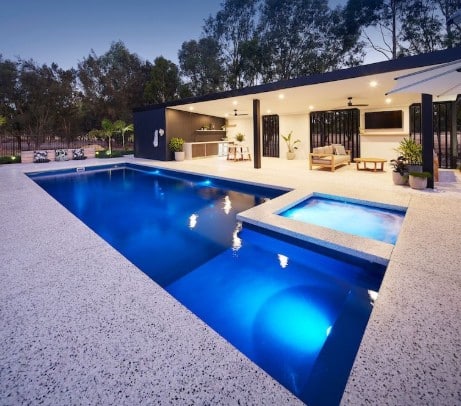
Fibreglass pools are very popular in Perth because they are durable, smooth-surfaced, and relatively low-maintenance. However, they still need correct care during winter.
The biggest risk is draining too much water, as the lightweight shell can be damaged by groundwater pressure. Maintaining the right calcium hardness levels is also critical to protecting the gelcoat surface.
Key points for fibreglass pools:
- Never drain the pool completely: Prevents shell movement or cracks.
- Maintain balanced calcium hardness: Avoids gelcoat weakening and surface scaling.
- Brush and vacuum before covering: Stops staining from organic debris and oils.
- Use a pool cover: Reduces evaporation in Perth’s dry winter winds and keeps water chemistry stable.
2. Concrete Pools
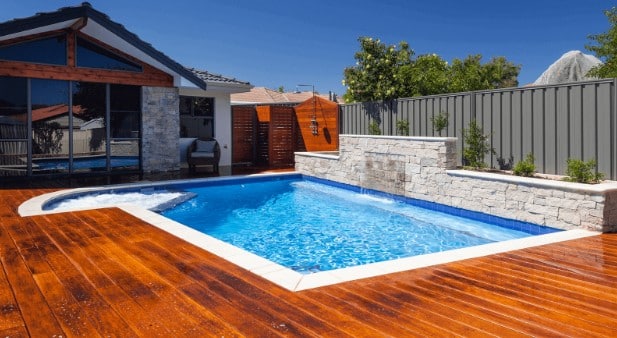
Concrete pools are strong and versatile, but they are also porous. This means algae, scale, and stains can form more easily during cooler months if not properly winterised.
Perth water often contains natural hardness, so calcium levels need special attention. Without balance, surfaces may feel rough or appear etched.
Key points for concrete pools:
- Balance pH and calcium hardness: Prevents etching, staining, and rough surfaces.
- Brush the walls and floor regularly: This stops algae from growing in porous areas.
- Apply a winter algaecide: Reduces algae growth in cracks and crevices.
- Check calcium levels often: Perth water supply can increase scaling risks.
3. Vinyl Pools
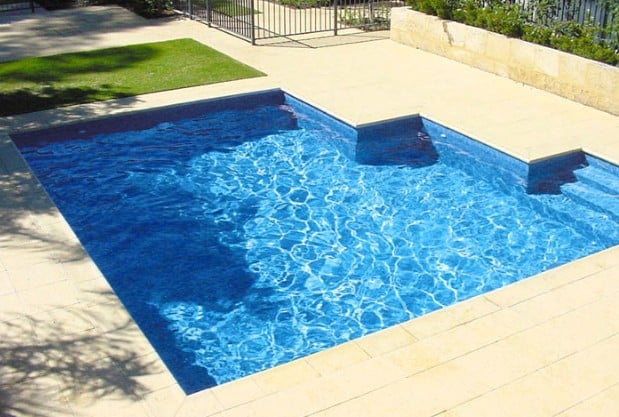
Vinyl-lined pools are less common in Perth but require a gentler winterising approach. The liner can be damaged by harsh chemicals, so careful handling is essential. With the right maintenance, vinyl pools remain soft, flexible, and long-lasting.
Key points for vinyl pools:
- Pre-dissolve chemicals in a bucket: Prevents liner burns, fading, or wrinkles.
- Maintain slightly higher chlorine levels: Avoids algae without risking liner bleaching.
- Inspect the liner during winter: Catch small wrinkles or tears early before they worsen.
- Use a fitted pool cover: Protects the liner from UV rays and reduces debris.
3. Saltwater vs. Chlorine Pools
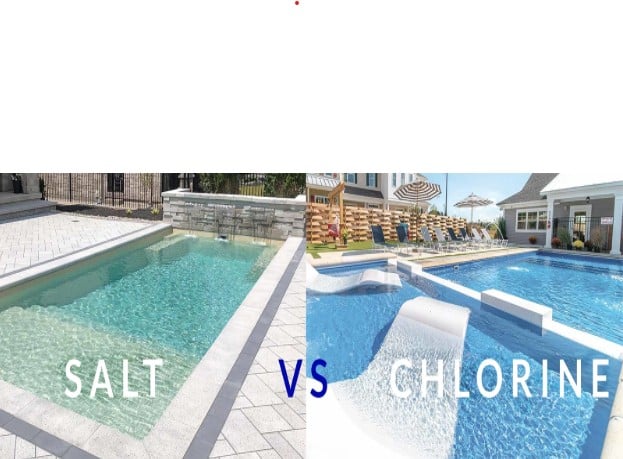
Many Perth pools run on saltwater chlorination systems, which need adjusting in winter.
As the water cools, chlorine demand decreases, meaning output settings and pump hours should be reduced. Traditional chlorine pools, on the other hand, require manual adjustments but follow the same principle of reduced chlorine needs.
Key points for saltwater and chlorine pools:
- Reduce salt chlorinator output: Prevents over-chlorination and saves salt.
- Lower pump runtime to 2–4 hours/day: Saves electricity while maintaining circulation.
- Check salt levels monthly: Heavy rain can dilute salinity.
- For chlorine pools, maintain slightly higher chlorine levels: This ensures protection when demand is lower.
- Keep pH, alkalinity, and calcium hardness balanced: Prevents scale, corrosion, and staining.
How to Winterise (6 Easy Steps) a Pool
Winterising a pool is straightforward, but it requires attention to detail.
By following the steps below, you can protect your pool from algae, reduce maintenance costs, and make reopening in spring much easier.
Step 1: Give Your Pool a Deep Clean
A clean pool is the foundation of effective winterisation. If you leave behind dirt, debris, and organic matter, these will sit undisturbed for months, creating the perfect conditions for algae and staining.
In Perth, winter winds and storms can blow leaves and dust into pools, making this step even more important.
What to do:
- Remove debris with a leaf scoop: Clear out leaves, twigs, and dirt floating on the surface.
- Empty skimmer and pump baskets: Keep filtration pathways clear to avoid strain on the pump.
- Brush pool surfaces: Focus on the waterline, steps, corners, and light fittings where algae often forms.
- Vacuum the floor and walls: Remove fine debris that can cause cloudy water.
- Use a robotic pool cleaner if available: It provides deeper cleaning and saves time.
Advantages:
- Reduces algae growth during winter.
- Prevents stains and surface damage.
- Keeps the filtration system free of blockages.
Disadvantages:
- Time-consuming if done manually.
- May require investment in a robotic cleaner for efficiency.
Step 2: Test and Adjust Your Water Chemistry
Balanced water chemistry is critical for winter because lower temperatures reduce chlorine demand, while heavy rainfall in Perth dilutes chemicals.
If levels are unbalanced, water can become corrosive, leading to equipment damage, or scale-forming, which stains surfaces. Proper adjustment before winter stabilises the pool for the season.
What to do:
Test water with a reliable kit or take a sample to a local pool shop.
- Adjust pH to between 7.2 and 7.6.
- Raise chlorine slightly to 2–3 ppm.
- Keep alkalinity stable at 80–120 ppm.
- Balance calcium hardness at 200–400 ppm.
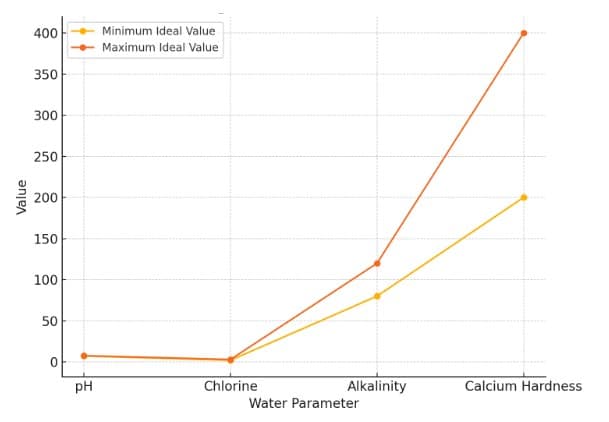
| Parameter | Ideal range | Why it matters |
|---|---|---|
| pH | 7.2–7.6 | Prevents corrosion and scale formation |
| Chlorine | 2–3 ppm | Controls algae and bacteria in low-use periods |
| Alkalinity | 80–120 ppm | Keeps pH stable and prevents staining |
| Calcium hardness | 200–400 ppm | Protects surfaces and equipment |
Advantages:
- Prevents algae, staining, and scaling.
- Keeps equipment protected from corrosion.
- Reduces the amount of chemicals needed in the ring.
Disadvantages:
- Requires regular testing equipment or professional help.
- Heavy rainfall may force a re-adjustment during winter.
Step 3: Add Winterising Chemicals
Even balanced water benefits from added protection during winter. Perth pools are prone to algae outbreaks, particularly mustard algae in shaded areas. Adding winter chemicals ensures the water remains clear and sanitised for months with little intervention.
What to do:
- Add a shock treatment to kill bacteria and organic matter.
- Apply a winter algaecide for ongoing algae prevention.
- Use a phosphate remover if phosphate levels are high, as these feed algae.
Advantages:
- Keeps water clear for longer.
- Prevents green or cloudy water.
- Reduces the risk of algae blooms.
Disadvantages:
- Additional cost for chemicals.
- Incorrect dosing may cause staining or foaming.
Step 4: Adjust Filtration and Chlorination
Water circulation is still necessary in winter, but not at summer levels. Reducing pump and chlorinator use lowers costs without compromising water quality. In Perth’s climate, cutting back run times provides the right balance between efficiency and protection.
What to do:
- Run the pump for 2–4 hours per day instead of 6–8.
- Reduce output on salt chlorinators to match lower chlorine demand.
- Clean cartridge filters or backwash sand/media filters before switching to winter mode.
Advantages:
- Saves electricity and chemical costs.
- Prevents water stagnation and bacterial growth.
- Extends equipment lifespan.
Disadvantages:
- Reduced run time means less filtration – must monitor water quality.
- If rainfall is heavy, extra circulation may be required.
Step 5: Reduce Water Level if Needed
Perth’s winter rainfall can raise pool water levels, leading to overflows and diluted chemicals. Adjusting the water level slightly prevents damage to skimmers and makes maintenance easier.
However, care must be taken not to drain too much water.
What to do:
- Lower the water slightly below the skimmer box.
- Maintain enough water to cover surfaces and protect the structure.
- Never fully drain the pool, particularly for fibreglass pools.
Advantages:
- Prevents overflow during storms.
- Reduces chemical dilution from rainwater.
- Protects skimmers and filtration systems.
Disadvantages:
- Must monitor regularly in heavy-rainfall winters.
- If water is lowered too much, surfaces can dry and crack.
Step 6: Fit a Pool Cover or Blanket
A properly fitted cover is the final layer of winter protection. Covers prevent evaporation, reduce chemical loss, and keep debris out. In Perth, where dry winds can still cause significant evaporation in winter, this step helps maintain water levels and stability.
What to do:
- Choose a solid cover for maximum debris protection or a mesh cover to allow rainwater through.
- Secure the cover tightly to withstand winter winds.
- Inspect regularly for damage, dirt, or sagging.
Advantages:
- Reduces chemical and water loss.
- Keeps out leaves, dust, and debris.
- Helps maintain a constant water level and balance.
Disadvantages:
- Covers require cleaning to prevent dirt build-up.
- Must be fitted securely to avoid wind damage.
Why Following All Six Steps Matters
Winterising is about prevention. By following these six steps, Perth pool owners can:
- Save on electricity and chemical costs.
- Prevent algae growth and surface damage.
- Protect expensive equipment such as filters, chlorinators, and pumps.
- Keep water cleaner with less maintenance.
- Reopen the pool quickly and cheaply in spring.
Ongoing Winter Pool Maintenance
Winterising your pool does not mean you can forget about it until summer returns. Even with a fitted pool cover, ongoing maintenance is essential to keep the water clean, prevent algae growth, and protect your equipment.
Perth’s winter brings strong winds, heavy rainfall, and sudden storms that can quickly affect water balance and debris levels.
By following a simple maintenance schedule throughout the cooler months, you can avoid costly problems and ensure your pool is ready for use when warmer weather arrives.
1. Weekly Maintenance
Every week, check the basic health of your pool. Even though chemical demand is lower in cooler water, pH and chlorine levels can still drift due to rainfall or debris. A quick skim of the surface will also stop leaves and dirt from rotting in the water and affecting the chemical balance.
What to do:
- Test water for pH and chlorine levels.
- Adjust chemicals if readings fall outside recommended winter ranges.
- Skim leaves, dirt, and debris from the surface and cover edges.
2. Fortnightly Maintenance
Every two weeks, take time to clean and brush the pool. Brushing prevents algae spores from clinging to surfaces, while cleaning baskets keeps the circulation system clear.
What to do:
- Brush pool walls, steps, and floor to prevent algae build-up.
- Empty skimmer baskets and pump baskets.
- Check around the pool cover for leaves or dirt that may slip into the water.
3. Monthly Maintenance
Once a month, carry out a deeper equipment check. Filters are especially important during winter as circulation time is reduced, and any blockages can put unnecessary strain on the system.
What to do:
- Check the filter pressure and backwash media filters if the pressure is high.
- Rinse cartridge filters thoroughly with a hose.
- Inspect equipment such as pumps, chlorinators, and heaters for signs of wear.
4. After Storms or Heavy Rain
Perth’s winter storms can bring large amounts of debris and dilute pool chemicals. After any storm, it is important to quickly restore balance and check the condition of your pool.
What to do:
- Inspect and clean the pool cover to remove dirt or water build-up.
- Empty skimmer and pump baskets.
- Re-test water chemistry and adjust if heavy rain has diluted the chemicals.
Do’s and Don’ts of Winterising a Pool
Winterising your pool requires balancing care and caution. Doing the right things keeps your pool safe and cost-efficient, while the wrong steps can cause expensive damage.
The following highlights the most important dos and don’ts to follow during Perth’s winter season.
| Do’s | Don’ts |
|---|---|
| Use winter algaecide | Let chlorine levels drop too low |
| Keep the water level stable | Drain the pool completely |
| Clean and secure your pool cover | Ignore the filtration system |
Cost of Winterising Your Pool
Winterising your pool isn’t just about protection — it delivers long-term cost savings. By adjusting pump run times, reducing chemical use, and using a pool cover, Perth pool owners can cut expenses through the cooler months.
- Lower electricity bills – Run pumps 2–4 hours instead of 6–8, reducing power use over winter.
- 20–30% chemical savings – Cold water slows algae growth, meaning less chlorine and balancing products.
- Pool covers save more – Minimise evaporation, cut top-up water needs, and reduce heating costs.
- Prevention saves money – Small spend on winterising chemicals avoids costly repairs or green pool recovery.
Even small changes in winter can save hundreds of dollars annually while keeping your pool healthy and ready for summer.
Professional Winter Pool Services and Checklist for Perth Pools
Even with a clear winterising routine, many pool owners prefer the assurance of having an expert handle the process.
Professional pool services in Perth not only take care of water balance and equipment adjustments, but they also provide a structured maintenance plan that keeps your pool in top condition throughout the season.
This is especially helpful for fibreglass pools that require careful water level management, or saltwater pools where chlorinator settings must be fine-tuned.
Working with a certified technician also means potential problems are spotted early. Small leaks, worn seals, or clogged filters can be identified during routine checks, preventing them from becoming major repair jobs. This proactive approach saves time and extends the lifespan of your pool equipment.
Benefits of professional winter pool services in Perth:
- Certified technicians with local expertise.
- Specialised care for fibreglass and saltwater systems.
- Prevents long-term damage to equipment and surfaces.
- Saves time and reduces maintenance stress.
Book your Perth winter pool service today with 1 Pool Care and protect your pool through the colder months.
FAQs
Do I need a pool cover in Perth’s mild winters?
Yes, it cuts evaporation, saves chemicals, and keeps debris out.
How often should I test water in winter?
Test every 2–3 weeks to keep pH and chlorine stable.
Should I turn off my pool pump completely?
No, run it 2–4 hours daily to keep water circulating.
Can I still swim in winter after winterising?
Yes, if water is balanced, but most people reduce usage.
What’s the cost for professional winterising in Perth?
Usually, a few hundred dollars, far cheaper than major repairs.
Conclusion
Winterising your pool in Perth is the key to saving money, protecting equipment, and keeping water healthy during the cooler months. A clean pool, balanced water, reduced pump hours, and a fitted cover make reopening in spring simple and stress-free.
While many tasks can be done at home, professional servicing ensures your pool is cared for correctly and costly issues are avoided. With the right approach, your pool will stay clear, safe, and ready to enjoy as soon as summer arrives.
Book your Perth winter pool service today with 1 Pool Care and keep your pool protected all year round.

With over 20 years of industry experience, Adrian Mole is the founder of 1 Pool Care, a leading mobile pool service in Perth. Known for his expert knowledge and reliable service, Adrian delivers professional pool cleaning, equipment repairs, and water balancing across the metro area. Backed by SPASA accreditation, he’s committed to quality, convenience, and customer satisfaction.

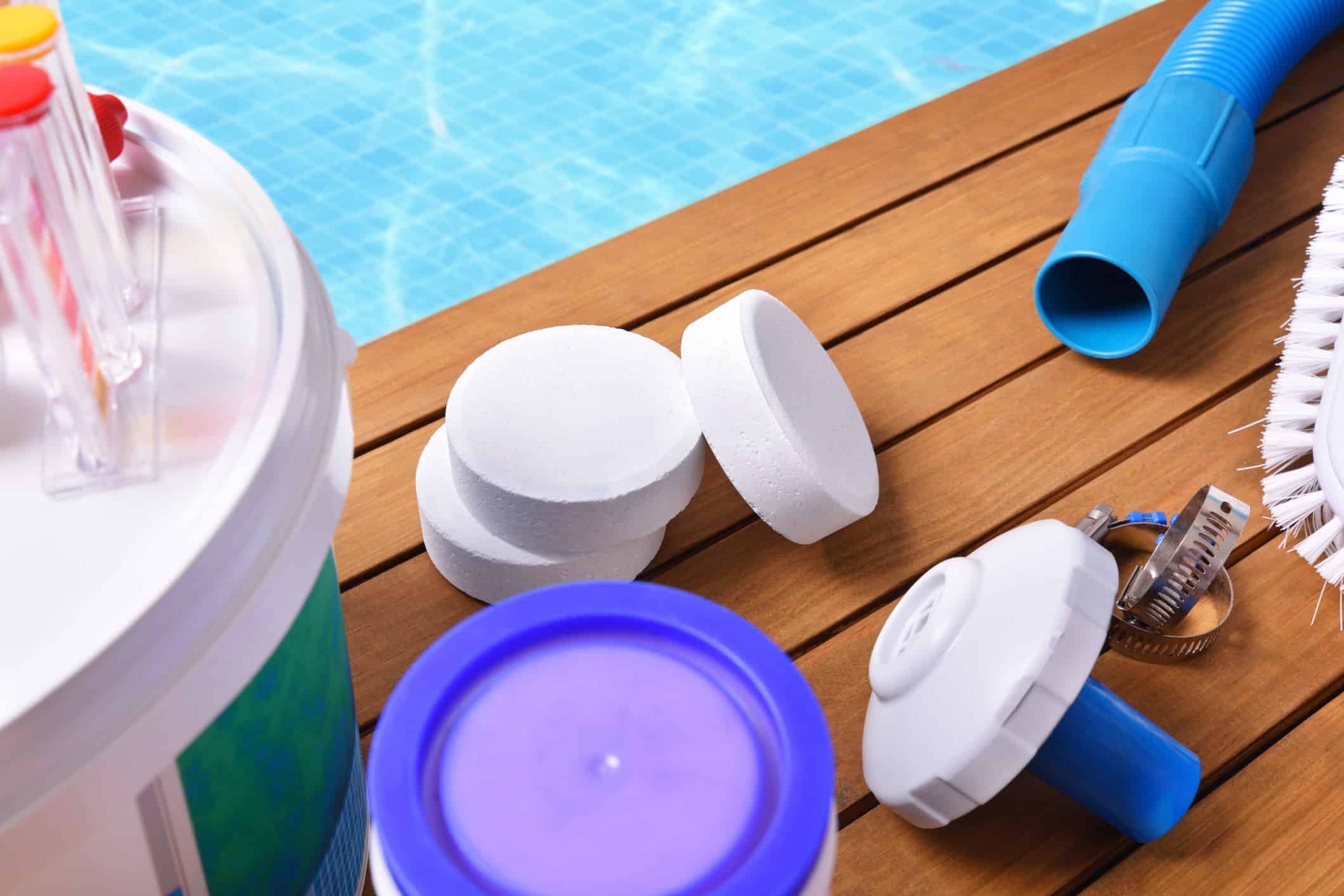

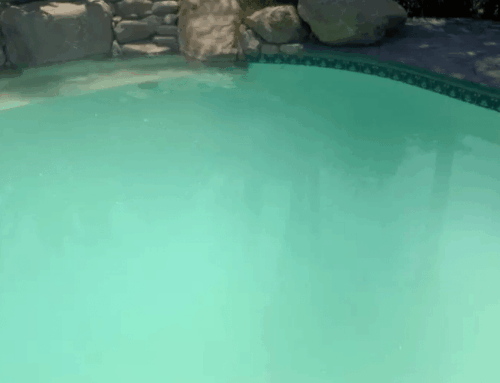
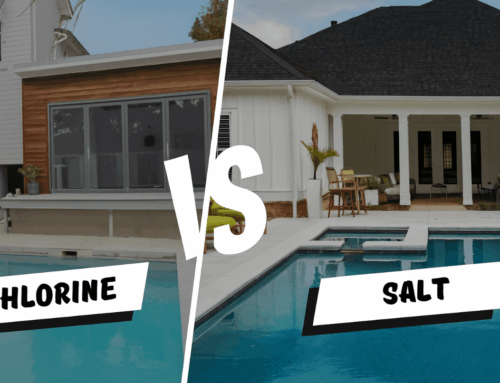
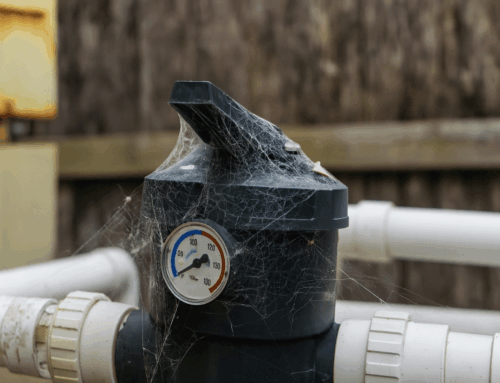





Social Media